The lesser known churches of Florence that will amaze you
Treasures unknown to most that will give you moments of wonder
Churches that are less famous, but still rich in art and history treasures, unexpected surprises in the heart of the city to be discovered step by step. Do you want to know which are the minor churches not to be missed in Florence? Here’s our top list.
Badia Fiorentina
Via del Proconsolo
Badia Fiorentina, with the paintings of Filippo Lippi and Giorgio Vasari, the statues of Bernardo Rossellino and Mino da Fiesole and the fifteenth-century Chiostro degli aranci by Rossellino embellished with frescoes narrating the life of Saint Benedict.
Chiesa di San Paolino
Via di S. Paolino, 8
The church of San Paolino, founded in 404 and intensively renovated several times over the centuries, mentioned by Boccaccio in the Decameron and of which Agnolo Poliziano was prior, rich in marble décor and paintings from the 17TH and the 18th centuries.
Chiesa di Sant'Ambrogio
Via Giosuè Carducci, 1
The church of Sant’Ambrogio, with the beautiful Chapel of the Sacrament frescoed by Cosimo Rosselli and the Tabernacle of Mino da Fiesole, in which is preserved the ampulla of the miracle of 1230 which the fresco represent. In the church there are the tombs of Mino da Fiesole, Andrea Verrocchio, Simone Del Pollaiolo known as Cronaca and the Del Tasso brothers.
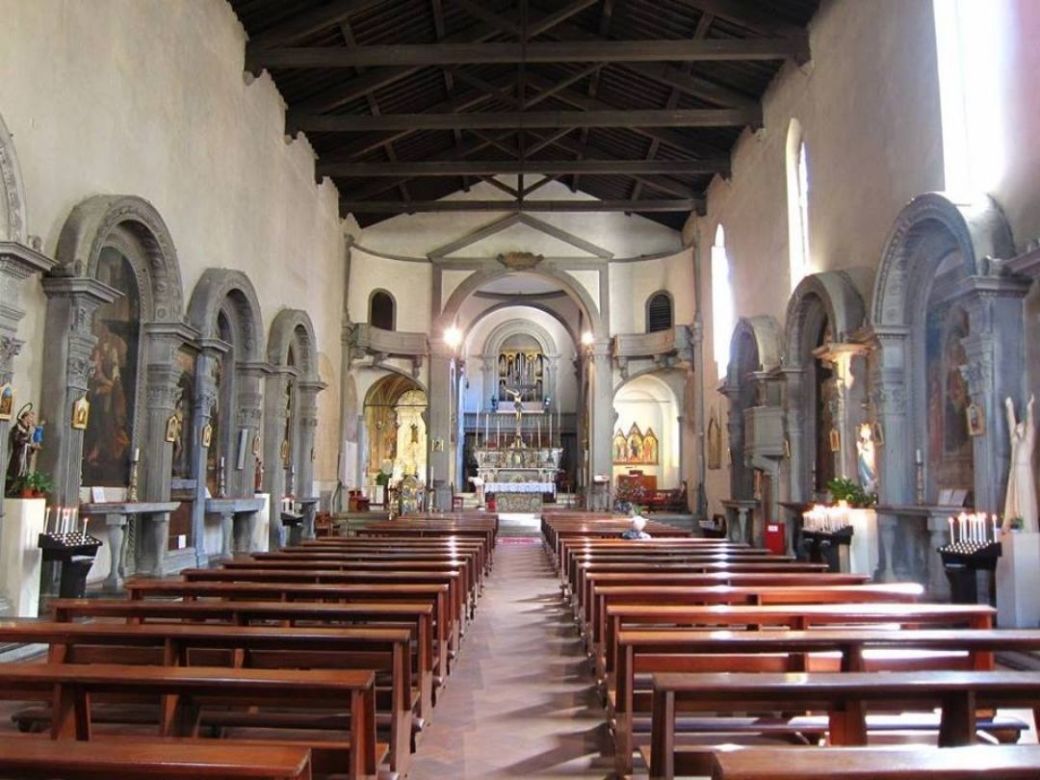 Chiesa di S. Ambrogio
Chiesa di S. AmbrogioChiesa di San Michele Visdomini
Piazzetta S. Michele Visdomini, 1
The church of San Michele Visdomini, in which can be found the painting called Pala Pucci by Pontormo, magnificent work of art recently restored and burial site of Filippo Lippi.
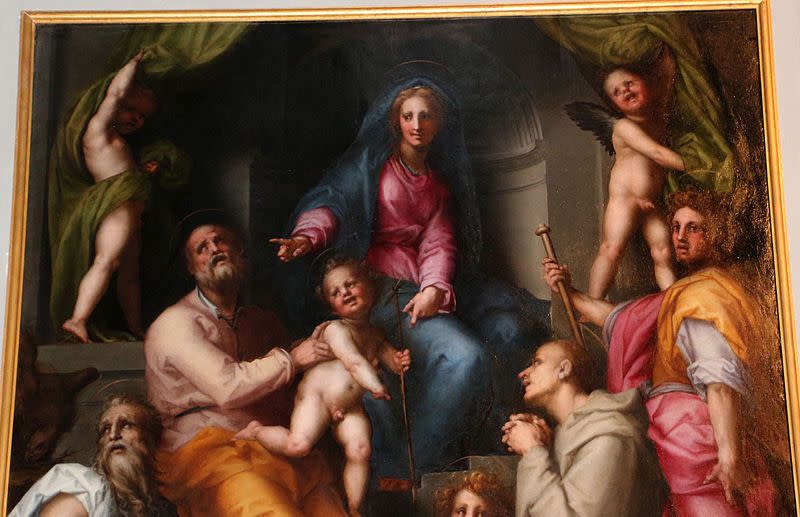 Pala Pucci del Pontormo
Pala Pucci del PontormoChiesa dei Santi Simone e Giuda
Via dei Lavatoi, 3
The chruch of Saints Simone and Giuda, is located in piazza San Simone in Florence, nestled in the alleys between Piazza della Signoria and piazza Santa Croce. Damaged in the flood of 1537, it was renovated only in 1630, designed by Gherardo Silvani, thanks to Bartolomeo Galilei, Knight of Malta. In the lunette is depicted the Virgin Mary between the Holy Apostles Simone and Giuda by Nicodemo Ferrucci. In addition to San Pietro in Cattedra, painting by Maestro di Santa Cecilia (1307), on the side altars there are altarpieces by artists active in Florence around 1630, including Jacopo Vignali, Francesco Curradi, Nicodemo Ferrucci. Orazio Mochi (whose statue in Boboli depicting two players of Saccomazzone is famous) made the two marble statues of Saints Simone and Giuda.
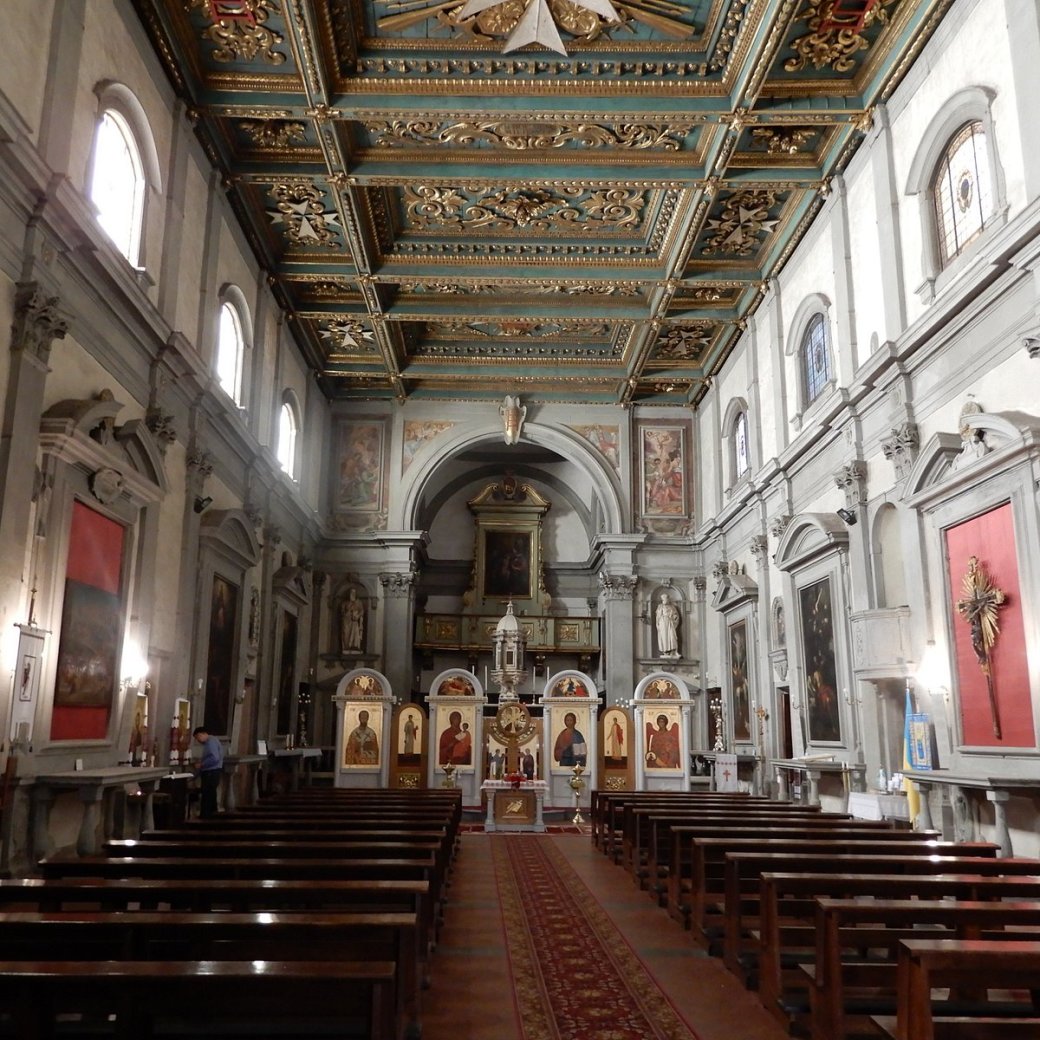 Chiesa dei Santi Simone e Giuda
Chiesa dei Santi Simone e GiudaChiesa Santa Margherita dei Cerchi
Via Santa Margherita
This is the church in Florence where Dante Alighieri met Beatrice and where he married Gemma Donati. If you are in love, don't forget to write a small thought or letter to Beatrice and leave it in the basket provided. The spirit of Beatrice will watch over your love or console you in case of a broken heart (If you are passionate about the history of Dante, do not miss our itinerary in the footsteps of the Supreme Poet).
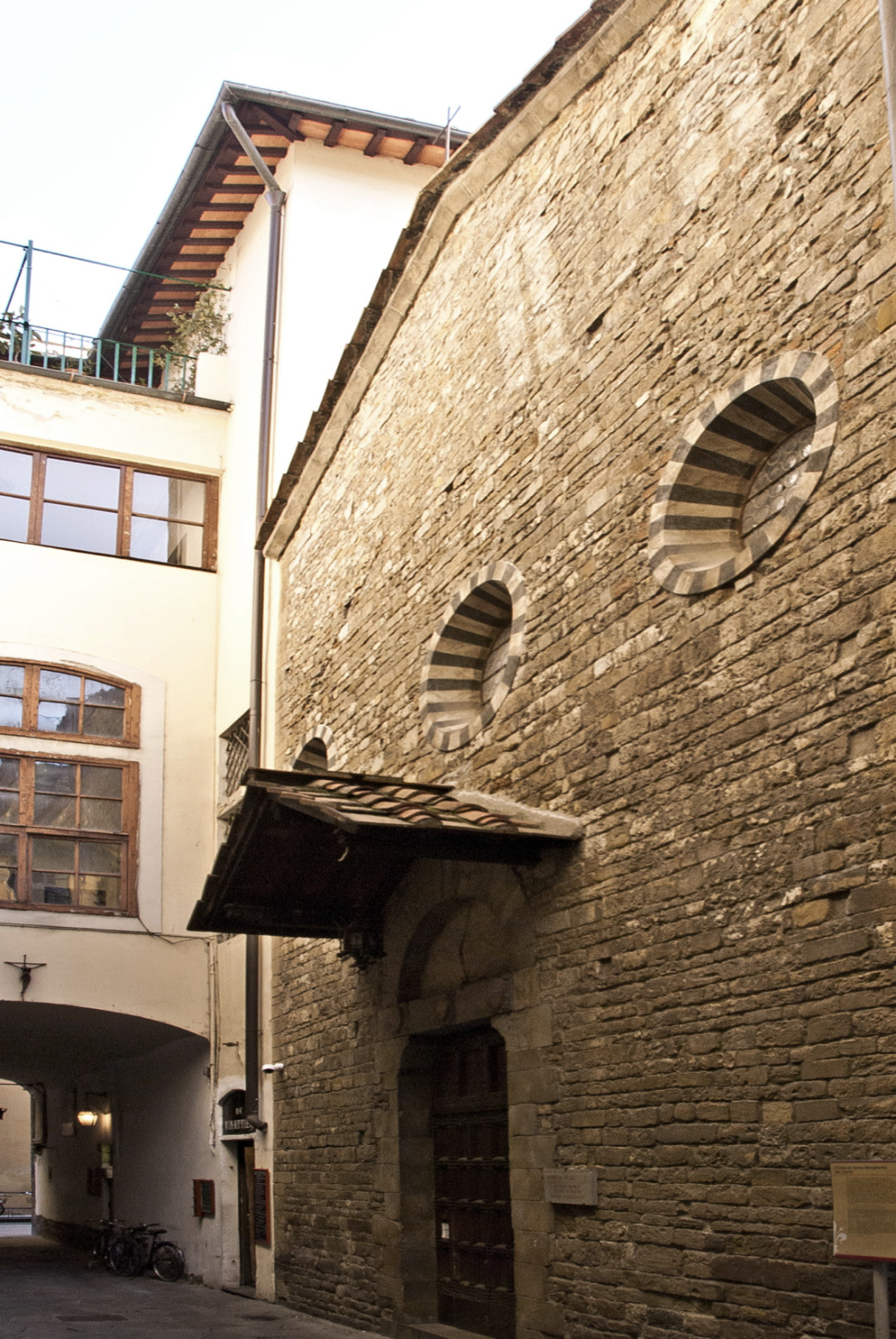 Santa Margherita dei Cerchi
Santa Margherita dei Cerchi Chiesa di Santa Trinita
Piazza di Santa Trinita
The church of Santa Trinita, which stands on the ruins of Santa Maria dello Spasimo, an ancient building from the year 1000 of which traces remain in the crypt. Santa Trinita is one of the few Gothic churches in Florence, but like many others, the building has been modified several times and adapted to the tastes of different eras. These modifications have been made by important names that have been milestones in the history of Florence and in the history of art: Bernardo Buontalenti (who made the facade and the monumental altar), Antonio del Pollaiolo, Domenico Ghirlandaio, Neri di Bicci, Luca della Robbia and Cimabue.
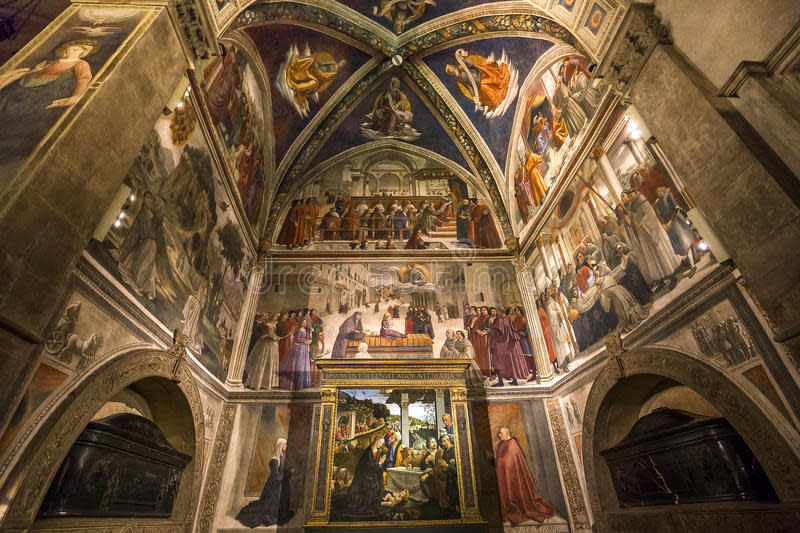 Chiesa di Santa Trinita Firenze
Chiesa di Santa Trinita FirenzeChiesa dei Santi Apostoli
piazza del limbo, 1
The Church of Santi Apostoli, overlooking Piazza del Limbo. The name of the Church can be translated in Holy Apostles, and is so called because in ancient times there was the cemetery where unbaptized children were buried. According to a plaque on the facade of the structure, the Church has been there since 800, from the time of Charlemagne, and is one of the oldest in Florence. Inside there is a majolica tabernacle by Andrea della Robbia and, above all, the stones that were brought by Pazzino de' Pazzi from the Holy Land after the first crusade. Every year on Easter day these flint stones are used to light the fuse that gives rise to the "Scoppio del carro".
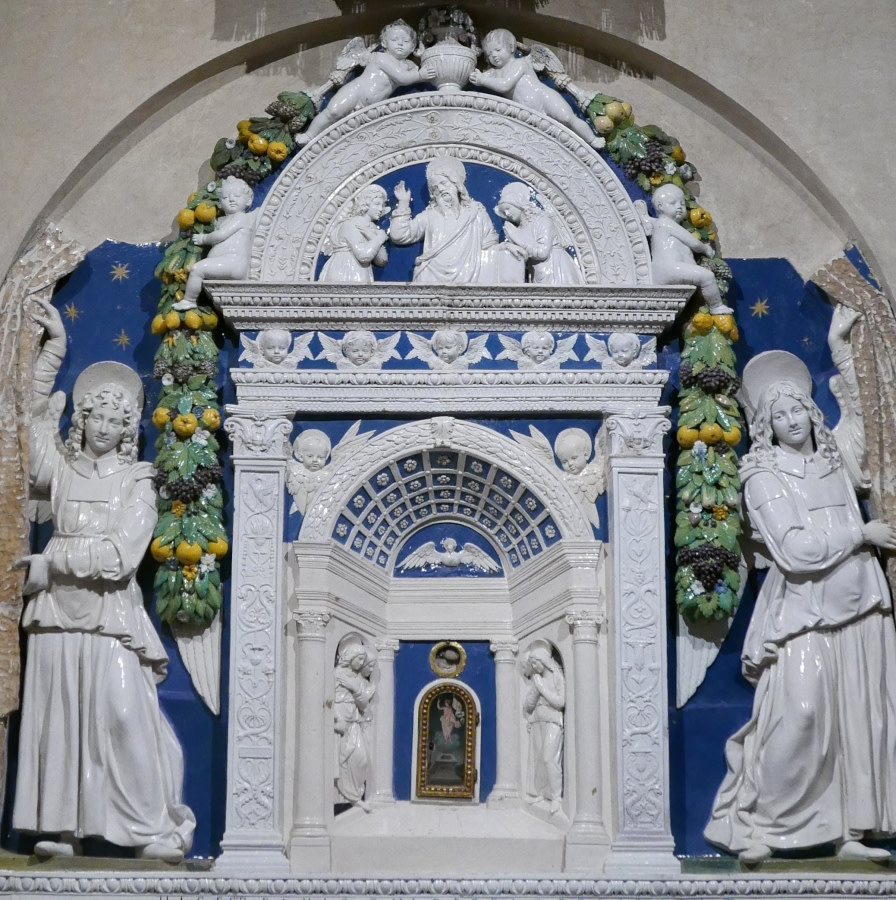 Il tabernacolo della Chiesa dei Santi Apostoli a Firenze
Il tabernacolo della Chiesa dei Santi Apostoli a FirenzeChiesa dei Santi Michele e Gaetano
Piazza degli Antinori, 1
Baroque and sumptuous, the Church of Saints Michael and Gaetano is located in Piazza Antinori. The beauty and richness of this church are due to the Grand Duchess Cristina di Lorena and to her son Cardinal Carlo dei Medici, who regularly subsidized the embellishments and the restoration, and for this reason their names are remembered with a plaque on the facade. Even the Antinori family, whose palace is located in front of the Church, donated large sums of money for the construction. Inside the Church are the chapels of many Florentine families of the time who asked artists to decorate and make their names immortal through decorations, sculptures and frescoes.
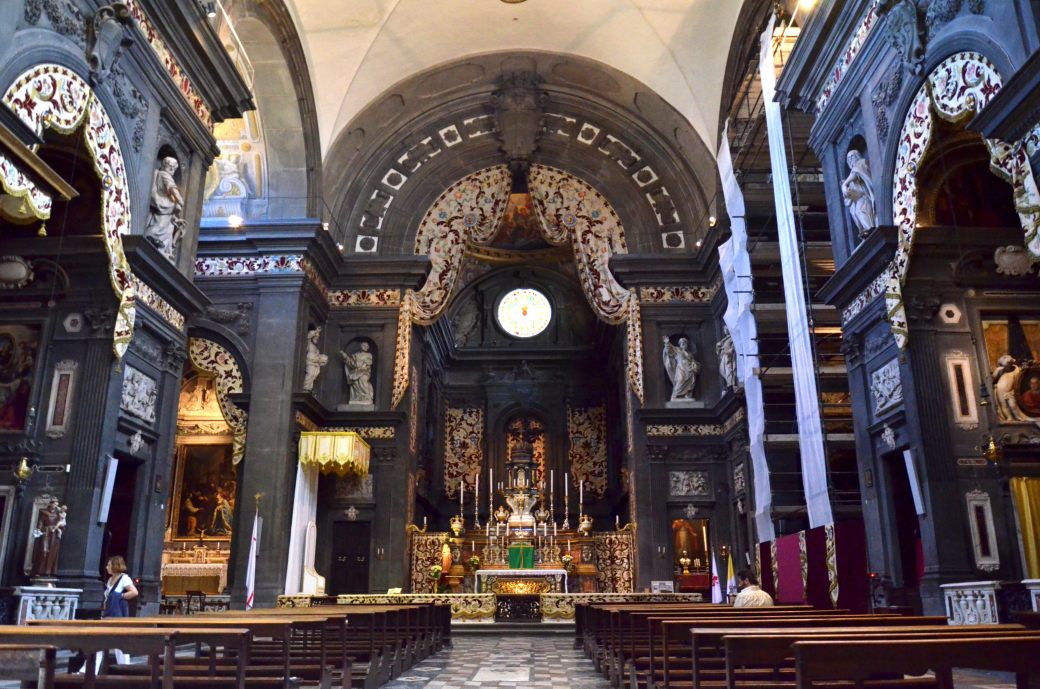 Chiesa dei Santi Michele e Gaetano
Chiesa dei Santi Michele e Gaetano







